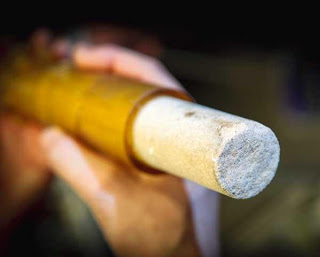
As CO2 levels in Earth’s atmosphere top 400 parts per million, options such as storing the greenhouse gas in porous sandstone rock formations found in abundance on the sea floor are of increasing interest. But how do we know if CO2 can be safely injected into spongy sandstone, and that once it is there, that it will stay there?
Two petroleum engineering and applied geophysics professors at the Norwegian University of Science and Technology (NTNU) are using X-rays and CAT scanners to probe the secrets of undersea rock formations and their ability to store CO2 safely in perpetuity. Their results are promising.
Earth has a fever
CO2 has another important characteristic: too much of it in the atmosphere is causing global temperatures to rise. The last time the average atmospheric CO2 levels were around 400 ppm, as they are now, was 3 million years ago. Earth has a fever, and by burning fossil fuels, we are causing it.
Checking for leaks
The goal of storing CO2 is to deposit it deep enough so that it becomes liquid. The gas needs to be buried under so many layers of sand and clay that it can’t escape, and stay encapsulated in a bubble under the sea forever.
But sometimes it doesn’t go according to plan. After a few years, the CO2 may begin to seep up and out. Sometimes small amounts manage to escape completely, appearing as small bubbles on the sea floor. This is one of the reasons that the petroleum professors at NTNU have acquired a giant X-ray machine — a CAT scanner.
This particular X-ray machine has previously served its duty at St Olavs Hospital in Trondheim, working steadily to reveal bone fractures and joint injuries. At NTNU it is being used to determine how much CO2 can be stored in various rock formations found under the sea. But taking X-rays of CO2 is not all that the professors are doing — they’re also measuring the speed of sound in different types of stone.
Patient — and pill
“This is our X-ray patient,” says Ole Torsæter, who is also a professor of petroleum engineering and applied geophysics at NTNU, and holds up a small piece of sandstone.
But this patient contains its own medicine — Earth’s own fever-reducing pill. This porous stone, found in abundance at the bottom of the sea, can store large amounts of CO2. Sandstone is porous, like a sponge — a sponge that oil companies can fill with CO2.
“Some sandstone can be filled with as much as 80 per cent CO2, while others can only hold about 30 per cent. These variations in capacity are exactly what we’re trying to figure out,” says Torsæter.
And here’s how they do it: they take sandstone and put it in water, so that all the pores are filled. They then put the stone into a thin, condom-like plastic cover. The cover has several holes in it that are sealed using microphones.
The entire thing is then placed in a box that simulates the pressure in the seabed, which is then placed in the X-ray machine. As the X-ray scanner is on, the researchers inject CO2 into the rock, filling the porous stone with it and pressing out the water.
The X-ray images show how much CO2 has penetrated the rock’s pores. Since CO2 has a different density than water, the speed of sound will be slower when the rock is saturated with CO2. Therefore, the researchers measure the speed of sound in the rocks, watching how it changes as CO2 enters the pores. The goal is to fill up the stone without cracking it.
Two years of CO2 emissions
“If the pressure in the stone is too high, it can crack. To relieve the pressure we need to remove the water, the same way a doctor would drain fluid from a patient’s cyst. We do that too. When CO2 is injected into the seabed, sometimes we need to remove the water being pressed out of the rocks through a new well,” say Landrø and Torsæter.
It has now been 14 years since the first CO2 was injected into a seabed formation in the North Sea. Since then, Statoil has stored more than 12 million tons of CO2 in such formations. In 2011, the Norwegian Petroleum Directorate presented an atlas showing that Norway may be able to store as much as 50 gigatons of CO2 in geological formations under the sea.
Annual global CO2 emissions are usually about 30 gigatons, meaning that Norway may be able to store almost two years of global emissions under the North Sea.
Norway is responsible for 0.17 per cent of global CO2 emissions. China accounts for 23 per cent.
Consumers are key
“I think it’s important to look at it from a practical standpoint. Storing CO2 in geological formations under the sea may be a good alternative to sending it straight into the atmosphere. If we do that, some of it is absorbed by the ocean anyway, so it is better store it under the sea, even though small quantities may still seep out,” says Landrø.
Consumers account for the largest emissions worldwide, he says: Heating and electricity generation account for about 40 per cent of global CO2 emissions, while transportation accounts for 25 per cent. “This means we as consumers can help to determine how much CO2 is emitted,” Landrø says. “That’s one reason why I bike to work every day.”
Note : The above story is reprinted from materials provided by The Norwegian University of Science and Technology (NTNU).










